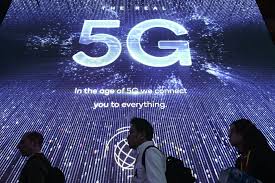There have been several attempts to reassure the public that 5G is safe, with Australian telcos and the Federal Communications Commission (FCC) weighing in most recently. With the 5G market starting to take off, not to mention the revolutionary potential the technology promises, it’s understandable why everyone wants to believe it is safe.
In spite of that, Joel M. Moskowitz, PhD, director of the Center for Family and Community Health in the School of Public Health at the University of California, Berkeley, has written an op-ed in Scientific American to make the case that there is no reason to believe 5G is safe.
Moskowitz begins by saying, “we believe it is our ethical responsibility to inform the public about what the peer-reviewed scientific literature tells us about the health risks from wireless radiation.”
After highlighting the FCC’s recent decision not to change the cellular safety standards that were established back in the 1990s, Moskowitz continues:
“Yet, since the FCC adopted these limits based largely on research from the 1980s, the preponderance of peer-reviewed research, more than 500 studies, have found harmful biologic or health effects from exposure to RFR at intensities too low to cause significant heating.
“Citing this large body of research, more than 240 scientists who have published peer-reviewed research on the biologic and health effects of nonionizing electromagnetic fields (EMF) signed the International EMF Scientist Appeal, which calls for stronger exposure limits. The appeal makes the following assertions:
“‘Numerous recent scientific publications have shown that EMF affects living organisms at levels well below most international and national guidelines. Effects include increased cancer risk, cellular stress, increase in harmful free radicals, genetic damages, structural and functional changes of the reproductive system, learning and memory deficits, neurological disorders, and negative impacts on general well-being in humans. Damage goes well beyond the human race, as there is growing evidence of harmful effects to both plant and animal life.’”
Moskowitz then goes on to discuss the specific dangers of 5G, especially the millimeter wave (mmWave) variety that provides the revolutionary speed 5G promises. Because of its extremely short range, mmWave requires base stations, repeaters and cell antennas to be placed every couple of hundred meters apart, at the farthest. This results in a much greater saturation of electromagnetic fields (EMF) and radiation as previous generations of wireless technology.
Moskowitz ends his op-ed by suggesting that the only safe way to proceed is to “support the recommendations of the 250 scientists and medical doctors who signed the 5G Appeal that calls for an immediate moratorium on the deployment of 5G and demand that our government fund the research needed to adopt biologically based exposure limits that protect our health and safety.”
This is similar to the stand a number of Swiss cantons have taken, calling for a halt on 5G deployments until further research can be done.


